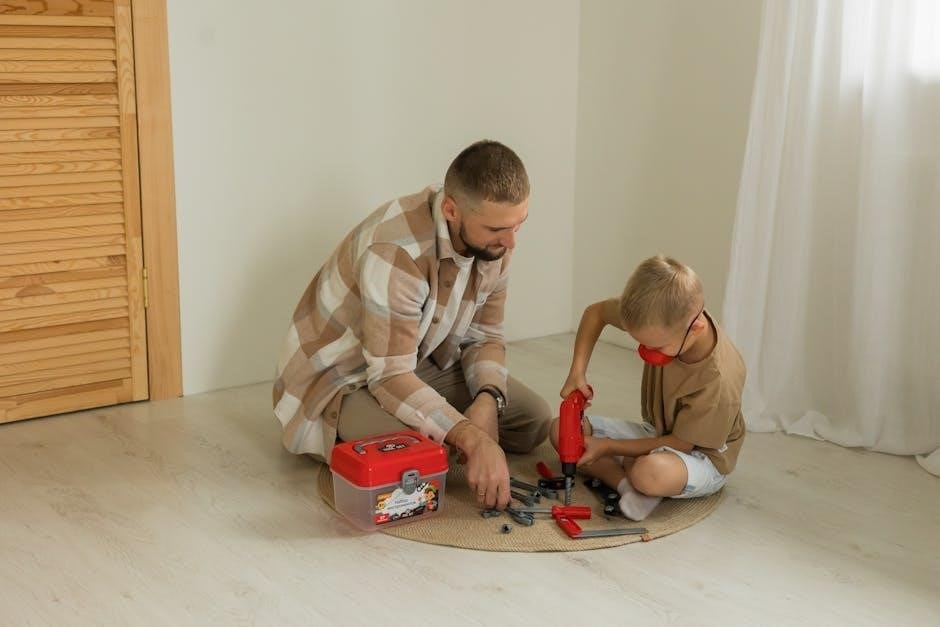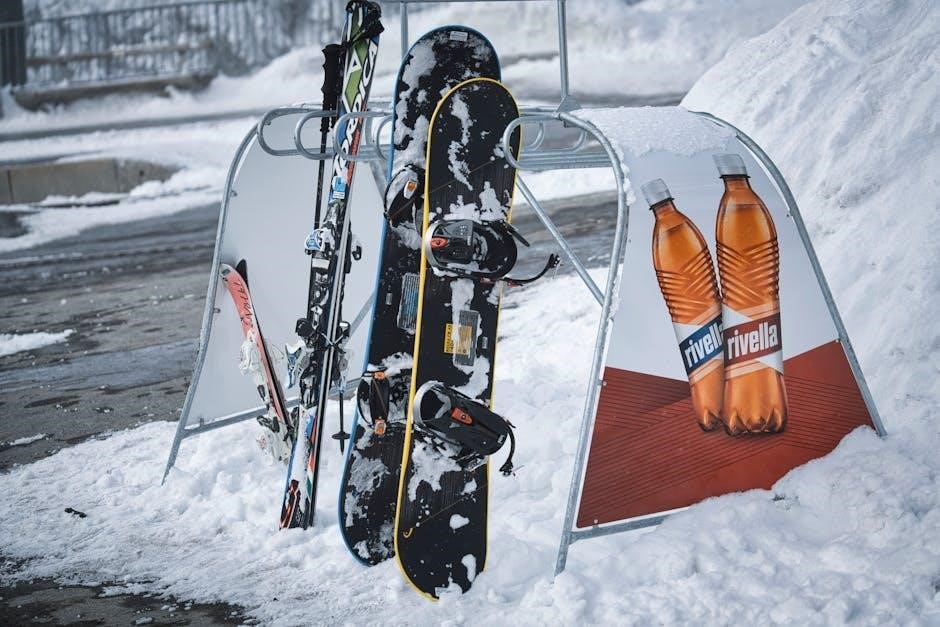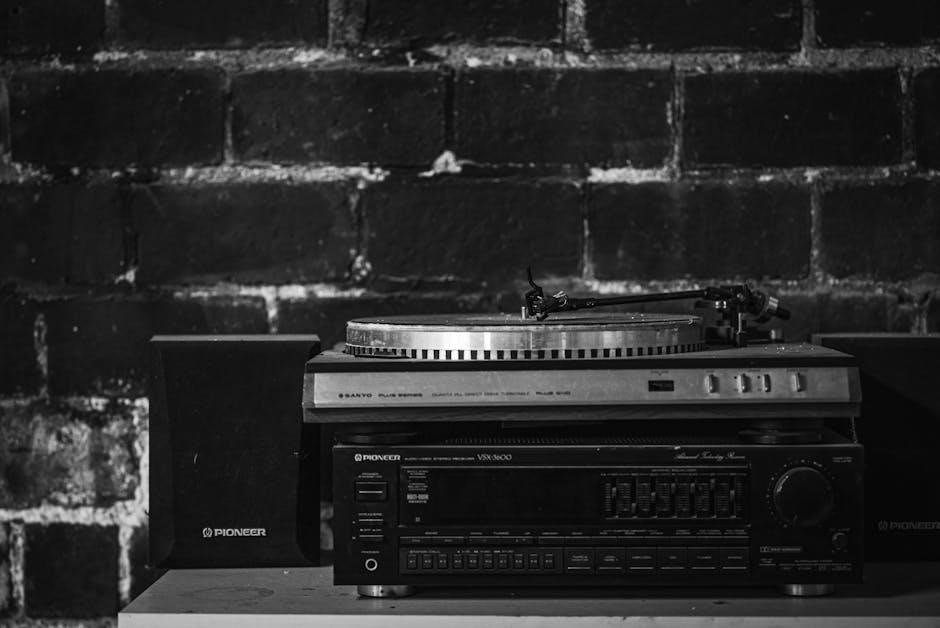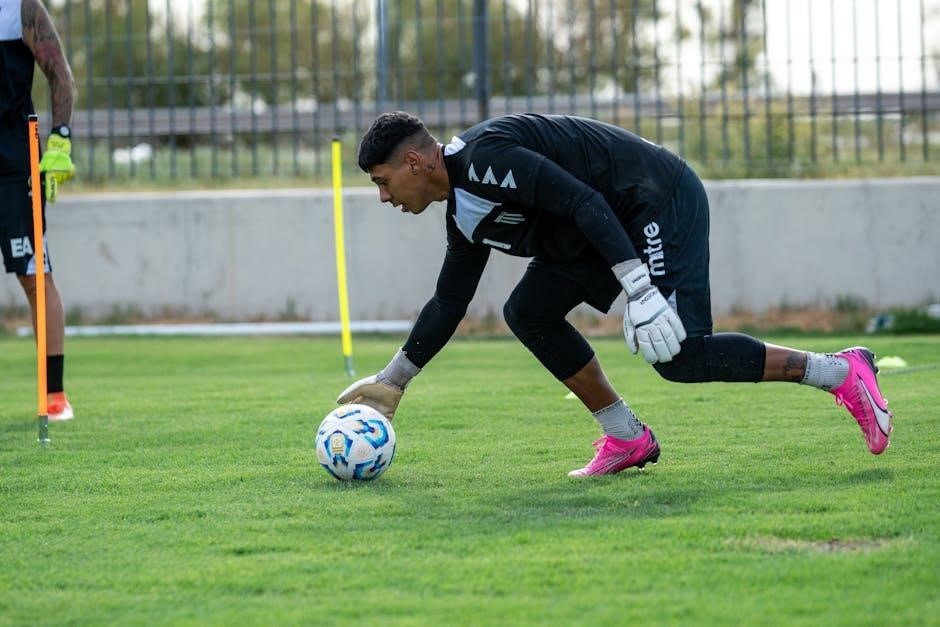Welcome to our comprehensive guide to the Kaladesh Remastered draft on MTG Arena. This limited format combines the Kaladesh and Aether Revolt sets, offering a fast-paced, artifact- and energy-focused environment. With a unique blend of synergy and strategy, players must adapt quickly to succeed. Green dominates as the strongest color, while black struggles, but every archetype can shine when drafted correctly. Whether you’re a seasoned pro or new to limited play, this guide will help you master the Kaladesh Remastered draft with expert tips, tier lists, and winning strategies.
Overview of Kaladesh Remastered Format
Kaladesh Remastered combines the Kaladesh and Aether Revolt sets, creating a fast-paced, artifact- and energy-focused limited format. The format emphasizes synergies between cards, with a strong emphasis on speed and aggressive strategies. Green is the dominant color, offering powerful creatures and ramp options, while black struggles to compete. The format rewards players who prioritize early-game threats and efficient energy generators. With a mix of vehicles, fabricate, and artifact-matter archetypes, the draft requires adaptability and a focus on building cohesive strategies. The unique blend of mechanics from both sets creates a dynamic and competitive environment, making it essential to understand the interplay between colors and archetypes to succeed.
Key Features of the Draft Environment
Kaladesh Remastered draft is defined by its fast-paced, artifact- and energy-focused gameplay. The format combines cards from Kaladesh and Aether Revolt, emphasizing synergy and aggressive strategies. Key features include the prominence of vehicles, fabricate, and energy-generating creatures, which reward players for building cohesive decks. Artifacts play a central role, with many cards incentivizing their inclusion. The format also highlights the importance of early-game threats and efficient mana curves. Green stands out as the strongest color, offering powerful creatures and ramp, while black lags behind. The draft environment demands adaptability, as players must quickly identify and prioritize synergies to build competitive decks. Understanding these core elements is essential for success in Kaladesh Remastered.
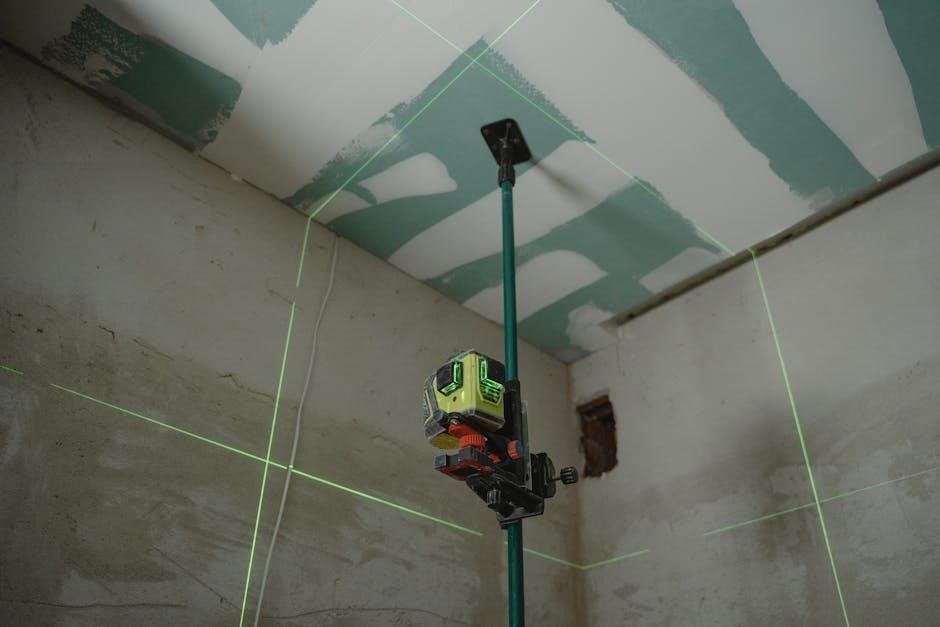
Importance of Adaptation in Kaladesh Draft
Adaptability is crucial in Kaladesh Remastered draft due to its dynamic and fast-paced nature; Players must quickly adjust their strategies based on the cards available in each pack and the signals from other drafters. The format’s emphasis on synergy and archetype-specific cards means that flexibility is key to building a competitive deck. Being able to pivot between strategies, such as switching color pairs or adjusting to the prevalence of artifacts, can significantly impact success. Additionally, recognizing the draft’s meta and adapting to the speed of the format ensures players stay ahead. Adaptation not only applies to deck-building but also to in-game decisions, making it a cornerstone of mastering Kaladesh Remastered draft.

Color Pairings and Synergies
Kaladesh Remastered draft emphasizes powerful color combinations and synergies, with green excelling as the dominant color and black being the weakest. Key pairings like Green-White for Vehicles and Blue-Red for artifacts drive the format, while energy and fabricate synergies enhance deck potential. Understanding these interactions is vital for success.
Green as the Dominant Color in Kaladesh
Green stands out as the most powerful color in Kaladesh Remastered, thanks to its access to high-impact creatures and synergies with artifact-based strategies. Cards like Verdurous Gearhulk and Oath of Nissa provide immense value, while Servant of the Conduit enables explosive starts. Green’s ability to ramp into larger threats and generate card advantage makes it a cornerstone of successful drafts. Its pairing with white for Vehicles or blue for artifact-matter synergies further solidifies its dominance. Drafters should prioritize green early, as it offers consistency and power across various archetypes. Balancing green’s strengths with complementary colors is key to maximizing its potential in the format.
Black as the Weakest Color in the Format
Black is widely considered the weakest color in Kaladesh Remastered due to its lack of strong, synergistic cards and limited interaction with the format’s key mechanics. While it offers some removal and creature options, these are often outclassed by other colors. Black’s creatures, such as Kambal, Consul of Allocation, can be impactful but struggle to compete with Green’s larger threats or White’s efficient Vehicles. Additionally, Black’s reliance on specific synergies, like lifelink or sacrifice effects, often fails to provide consistent value. Its lack of artifact-matter or energy-based cards further marginalizes it in a format dominated by these mechanics. As a result, drafting Black requires careful planning and often results in less competitive decks compared to other colors.
Best Color Combinations for Success
In Kaladesh Remastered, the most successful color combinations are those that leverage the format’s key mechanics and synergies. Blue-Red is a powerhouse due to its access to artifact-matter cards, Vehicles, and high-impact removal. Green-White is another strong pairing, combining Green’s oversized creatures with White’s efficient Vehicles and +1/+1 counter synergies. Additionally, Blue-Green can excel by utilizing energy-generating creatures and fabricate effects to fuel larger threats. These combinations are well-positioned to dominate the format, as they align with Kaladesh’s artifact- and energy-focused design. Prioritizing these pairings during the draft will significantly improve your chances of building a competitive deck and securing victories.

Archetype Breakdown
Kaladesh Remastered features distinct archetypes like Vehicles, Artifacts-Matter, and Energy/Fabricate synergies, each offering unique strategies to dominate the draft format through focused card interactions and builds.
Vehicles Archetype Strategy
The Vehicles archetype in Kaladesh Remastered revolves around powerful artifact creatures that function as vehicles, requiring crew costs to unlock their full potential. Cards like Depala, Pilot Exemplar and Toolcraft Exemplar synergize perfectly with vehicles, enabling aggressive starts. The strategy emphasizes flooding the board with low-to-the-ground creatures to crew vehicles and generate overwhelming pressure. Mid-to-late game, high-impact vehicles like Heart of Kiran can take over, offering evasion and significant power. Drafting for this archetype requires prioritizing both vehicles and creatures to crew them, ensuring a cohesive game plan. The key is to balance early aggression with late-game threats, creating a racing dynamic that opponents struggle to counter. Focus on grabbing early vehicle payoffs and supporting them with a curve of creatures to maximize synergy and tempo.
Artifacts-Matter Archetype Overview
The Artifacts-Matter archetype in Kaladesh Remastered focuses on leveraging artifacts to create significant advantages. Cards like Whir of Invention and Tezzeret’s Touch enable artifact-based strategies, allowing players to tutor for key artifacts or cheat them into play. This archetype thrives on synergy, with artifacts like Paradoxical Outcome and Thopter Spy Network generating card advantage or token production. Supporting this theme are cards that provide artifact-related bonuses, such as Reverse Engineer for card draw and Shred for artifact removal. The strategy emphasizes building a cohesive suite of artifacts and payoffs, creating a powerful engine that opponents struggle to disrupt. Early game setup is crucial, but the archetype shines in the mid-to-late game with explosive plays and sustained value. Properly drafting for this archetype requires balancing artifact payoff cards with enablers to maximize synergy and control the board.
Energy and Fabricate Synergies
The Energy and Fabricate synergies in Kaladesh Remastered offer a powerful way to generate value through token production and creature enhancement. Energy-generating creatures like Snervig and Wind Dancer provide the necessary resources to activate Fabricate abilities, allowing players to create Servo tokens or boost their creatures. Cards like Conclave Cavalier and Janjeet Sentry excel in this archetype by leveraging Energy to fuel their Fabricate abilities, creating a steady stream of tokens or enhancing their own power. This synergy enables aggressive starts and mid-game dominance, as token generators and value engines work hand in hand. Drafting for this archetype requires prioritizing Energy sources and Fabricate payoffs early, while also picking up removal spells to protect your board. The combination creates a formidable strategy that pressures opponents from the start.

Card Evaluation by Rarity
Evaluating cards by rarity helps identify power levels and draft priorities, with commons forming the backbone, uncommons offering unique synergies, and rares providing high-impact plays.
Top Commons in Kaladesh Remastered
In Kaladesh Remastered, commons are the backbone of any draft deck, offering consistent value and enabling key strategies. Cards like Scrapheap Scrounger provide durable creatures with upside, while Hydrosurge offers versatile interaction. Shrewd Negotiation is a standout, allowing you to trade cards for advantage. Aerial Responder and Wind Dancer are excellent for aggressive and defensive decks, respectively. Welding Sparks and Propeller Pioneer support artifact and vehicle synergies. These commons are high picks due to their versatility and ability to slot into multiple archetypes. Prioritizing them early ensures a solid foundation for your deck, enabling you to build around their strengths as the draft progresses.
Powerful Uncommons to Prioritize
In Kaladesh Remastered, uncommons can significantly bolster your deck’s power level. Cards like Renegade Tactics provide a massive boost to creatures and enable anthem effects, while Decoction Module offers incredible versatility with its multiple modes. Tezzeret’s Touch is a game-changer, turning creatures into artifacts for Fabricate synergies. Aether Hub is a staple for mana fixing and generating extra resources. Shrewd Negotiation allows for advantageous trades, and Welder’s Apprentice enables aggressive artifact strategies. These uncommons are high-impact picks that can define your deck’s strategy. Prioritizing them ensures you build a competitive edge, as they often provide the glue that holds archetypes together. Grab them early to maximize your draft’s potential and create a cohesive, powerful deck.
High-Impact Rares in the Format
Rares in Kaladesh Remastered can drastically influence the game, and certain ones stand out for their power and versatility. Tezzeret’s Ambition is a standout, offering card draw and artifact generation, while Saheeli’s Artistry provides a flexible way to generate value. Metalwork Colossus is a formidable threat, especially when enabled by artifact synergies. Atraxa, Grand Unifier is a game-ending powerhouse in the right deck. Rares like Tezzeret, Master of the Bridge and Nissa, Who Shakes the World also dominate boards. These cards often dictate the flow of the game, making them high priorities when drafting. Securing one early can shape your strategy and elevate your deck’s potential significantly.
Mythic Rare Cards to Watch For
Mythic rares in Kaladesh Remastered are highly sought after due to their immense power and rarity. Cards like Atraxa, Grand Unifier and Tezzeret, Master of the Bridge can single-handedly dictate the flow of the game. Nissa, Who Shakes the World is another powerhouse, offering ramp and board presence. Saheeli, the Gifted excels in artifact-heavy decks, providing Both card advantage and board control. These mythic rares are rare in drafts, making them highly valuable when opened. Prioritizing them early can significantly enhance your deck’s potential. Their impact is substantial, and players often build around them to maximize their effectiveness in various archetypes.

Draft Strategy and Tips
Draft strategy is crucial in Kaladesh Remastered, requiring a balance of adaptability and focused card selection to build cohesive decks.
The Role of Card Synergy in Drafting
Card synergy is paramount in Kaladesh Remastered, as it often outweighs individual card strength. Drafting revolves around identifying and building around cohesive strategies, such as Energy or Vehicles, which amplify each other. Early picks should signal potential archetype directions, guiding subsequent selections. Prioritize cards that enhance your chosen strategy, even if they seem weaker in isolation. For example, Energy-generating creatures become more valuable when paired with Energy-matters spells. Similarly, Vehicle enablers like pilots andcrew cards gain potency with Vehicles. Committing to a archetype early ensures a more cohesive deck. Avoid chasing high-value cards that don’t align with your strategy, as they may dilute your overall game plan. Synergy-focused drafting is key to success in Kaladesh Remastered, where interlocking pieces often triumph over standalone powerhouses.
Signaling and Adapting to the Draft
Signaling and adapting are crucial in Kaladesh Remastered, as they allow you to pivot your strategy based on the draft’s flow; Pay attention to the cards being passed to you, as they often indicate what others are avoiding or prioritizing. For example, if you consistently receive artifact creatures, it may signal that the table is light on artifact-matters cards. Conversely, if certain colors or archetypes are underdrafted, it creates opportunities to capitalize on overlooked synergies. Adaptability is key; be prepared to shift your focus if your initial plan isn’t unfolding. Drafting is a dynamic process, and reading the table’s signals can help you build a more cohesive deck. Adjusting your picks based on what’s available ensures you maximize your deck’s potential, even if it means deviating from your initial strategy.
Early Pick Strategies for Success
In Kaladesh Remastered, early picks are pivotal for setting up a successful draft. Prioritize high-impact cards, such as artifact creatures, removal spells, or cards that enable key synergies like energy or fabricate. Avoid committing to a specific archetype too early, as the draft’s direction may shift based on the cards you see. Instead, focus on picking the best available card in the early rounds, even if it doesn’t immediately align with your intended strategy. Pay attention to signals, such as the absence of certain colors or archetypes, to identify opportunities. Building a strong foundation in the first few picks ensures you have a solid base to work with as the draft progresses.
Mid-to-Late Round Drafting Tips
In the mid-to-late rounds of a Kaladesh Remastered Draft, focus on completing your chosen archetype and rounding out your deck. Pay attention to signals from other players to identify underdrafted strategies or colors. Prioritize cards that enhance your existing synergies, such as energy generators or artifact payoff cards. Avoid overcommitting to a single archetype if the picks aren’t there. Instead, remain flexible and adapt to the draft’s flow. Use later rounds to address mana curve gaps and add high-value utility cards. Don’t overlook sideboard options, as they can be crucial in matchups. By staying attentive and adjusting your strategy, you can maximize your deck’s potential in the later stages of the draft.

Building Your Deck
Transform your draft picks into a cohesive deck by evaluating synergies, balancing your mana curve, and ensuring a mix of creatures, removal, and interaction. Prioritize consistency and adaptability, while setting aside weaker cards for the sideboard to optimize matchups.
Crafting a Cohesive Game Plan
Building a successful Kaladesh Remastered deck begins with a clear game plan. Identify your draft’s core strategy, whether it’s aggro, midrange, or control, and ensure every card supports this vision. Focus on synergy between creatures, removal, and payoff cards to create a consistent flow. Early-game threats like Scrapheap Scrounger or Toolcraft Exemplar set the tone, while late-game cards like Verdurous Gearhulk provide a powerful climax. Avoid including cards that don’t align with your plan, as they dilute your deck’s effectiveness. Balance your curve to ensure you can develop your board each turn, and prioritize interaction to disrupt opponents. A cohesive strategy ensures your deck performs consistently across matchups.
Mana Curve Optimization
Optimizing your mana curve is critical for consistent performance in Kaladesh Remastered drafts. Aim for a balanced distribution of spells across mana costs, with a focus on 1- to 4-mana cards for early- to mid-game dominance. Avoid overloading on high-mana cards, as they can lead to slow starts. Prioritize creatures and removal spells in the lower end of the curve to ensure early board control. Mid-mana cards like Fleetwheel Cruiser or Verdurous Gearhulk provide impactful turns without overextending. Higher-mana cards should be limited to game-ending threats or critical payoff pieces. A well-distributed curve ensures you can develop your board smoothly and maintain tempo throughout the game, making your deck more resilient to disruption and opponent’s strategies.
Sideboarding Strategies for Matchups
Sideboarding is a crucial aspect of refining your strategy for specific matchups in Kaladesh Remastered. Identify your opponent’s key threats and adjust your deck to address them. For example, if facing a Vehicles-heavy deck, prioritize artifact removal like Scrapheap Scrounger or Krook of the Fold. Against Energy decks, include cards like Tajuru Pathwarden to disrupt their Fabricate synergies. Swap out less impactful cards for targeted answers to improve your matchup leverage. Pay attention to the opponent’s win conditions and tailor your removal spells or counterspells accordingly. Practice adaptability and fine-tune your sideboard based on the metagame to maximize your chances of success in competitive drafts. A well-executed sideboard plan can turn unfavorable matchups into victories.

Expert Tips and Tricks

Experts emphasize understanding the draft’s pacing, signaling, and adapting based on seen cards, prioritizing synergy, and flexible archetype switches to maximize win conditions in Kaladesh Remastered.
Mastering the Speed of Kaladesh Draft
Mastering the speed of Kaladesh Draft involves balancing aggressive and controlling strategies. The format rewards decks that can quickly deploy threats while maintaining interaction. Prioritize cheap, evasive creatures and early-game artifacts to apply pressure. However, don’t overlook the importance of removal and counterspells to disrupt opponents. Adapt your strategy based on the cards you draft—aggro decks thrive in the early game, while control decks rely on late-game power. Pay attention to signals in the draft to determine the meta and adjust your pace accordingly. Mulligan aggressively for strong starts, and don’t be afraid to pivot if your initial plan isn’t working. Kaladesh’s artifact-heavy environment also allows for explosive starts, so prioritize consistency in your mana curve to maintain tempo.
Leveraging Archetype Flexibility
Leveraging archetype flexibility is crucial in Kaladesh Remastered Draft, as the format offers multiple viable strategies. Players can seamlessly transition between archetypes like Vehicles, Artifacts-Matter, or Energy depending on the cards drafted. This flexibility allows drafters to pivot early if their initial archetype isn’t unfolding as planned. Key to this adaptability is prioritizing versatile cards that fit into multiple strategies. For example, artifact creatures and generic removal spells can slot into various builds. Additionally, staying open to signals from other drafters helps identify underdrafted archetypes. Mastery of this flexibility requires a deep understanding of the format’s synergies and the ability to reevaluate priorities as the draft progresses. This approach maximizes the likelihood of constructing a cohesive and competitive deck.
Common Mistakes to Avoid
Avoiding common mistakes is vital for success in Kaladesh Remastered Draft. One frequent error is forcing a specific archetype too early, leading to inconsistent decks. Players often overvalue low-impact cards, neglecting synergies and overall deck cohesion. Drafting too many creatures without sufficient removal or interaction is another pitfall, leaving decks vulnerable to aggressive strategies. Ignoring signals from other drafters, such as underdrafted colors or archetypes, can result in missed opportunities. Additionally, prioritizing high-impact rares over consistency often backfires, as balanced decks perform better. Finally, failing to adapt to the draft’s progression can lead to poor card choices. Awareness of these mistakes helps drafters build more competitive and cohesive decks, maximizing their chances of success in the format.

Additional Resources
Explore recommended tier lists, Draftsim simulations, and guides from Lords of Limited for deeper insights into Kaladesh Remastered Draft strategies and card evaluations.
Recommended Tier Lists for Kaladesh
Tier lists are essential tools for understanding card values and synergies in Kaladesh Remastered Draft. These rankings, often updated by experts, highlight top-tier cards and strategies. Platforms like PLATFORM and WEBSITE provide detailed breakdowns, categorizing cards into tiers from S-tier (must-picks) to C-tier (situational). They emphasize the strength of artifact-themed cards, energy synergies, and vehicle enablers. By studying tier lists, drafters can prioritize picks, identify archetype enablers, and avoid underperforming cards. For example, cards like CARD NAME and CARD NAME are often top-tier due to their versatility. These lists also reveal meta trends, helping players adapt their strategies. Regularly reviewing tier lists ensures drafters stay competitive and make informed decisions during the draft.
Draftsim as a Valuable Tool
Draftsim is an indispensable resource for mastering the Kaladesh Remastered Draft format. This powerful tool allows players to simulate drafts, test strategies, and refine their decision-making skills in a risk-free environment. By practicing with Draftsim, drafters can familiarize themselves with the set’s unique mechanics, such as energy, vehicles, and artifact synergies. The platform provides insights into card values, archetype strengths, and pick-order optimization. Regular use of Draftsim helps players identify high-priority cards, adapt to draft signals, and build cohesive decks. Its realistic draft simulations make it an excellent way to improve overall performance and confidence before jumping into real matches. For both rookies and experienced players, Draftsim is a must-use tool to refine Kaladesh Remastered Draft strategies.
Lords of Limited and Other Guides
Lords of Limited is a highly regarded podcast and resource for Magic: The Gathering draft enthusiasts, offering deep dives into the Kaladesh Remastered format. Their detailed analysis covers archetype breakdowns, draft strategies, and card evaluations, making it a must-listen for players aiming to improve. Additionally, other guides from seasoned players and content creators provide complementary perspectives on draft priorities, deck-building tips, and matchup strategies. These resources often highlight common pitfalls to avoid and share expert-level insights into optimizing picks and adapting to the draft environment. By combining these guides with hands-on practice, players can refine their skills and develop a well-rounded approach to Kaladesh Remastered Draft. Leveraging these tools ensures a more informed and successful drafting experience.
Kaladesh Remastered Draft offers a dynamic and strategic experience. By mastering color pairings, archetypes, and draft strategies, players can elevate their gameplay and confidently navigate the format.
Final Thoughts on Kaladesh Draft
Kaladesh Remastered Draft is a thrilling format that rewards strategic thinking and adaptability. With its unique blend of artifact synergy, energy manipulation, and vehicle-based aggression, it challenges players to think creatively. The format emphasizes the importance of understanding archetype strengths and weaknesses, as well as drafting cohesive decks that maximize card interactions. While it can be competitive, the format also offers opportunities for fun and innovative builds. To succeed, players must stay flexible and open to shifting draft signals. Whether you’re a seasoned pro or a casual drafter, Kaladesh Remastered Draft provides endless opportunities to refine your skills and enjoy the game. Embrace the format’s complexity and dive in with confidence!
Preparing for Your Next Draft
To excel in your next Kaladesh Remastered Draft, focus on refining your strategy and staying adaptable. Review past drafts to identify patterns and areas for improvement. Practice evaluating cards quickly and prioritize synergy over individual power. Familiarize yourself with common archetypes to anticipate opponents’ moves. Stay flexible in your picks, as the draft’s direction can shift unexpectedly. Use tools like Draftsim to simulate drafts and test strategies. Additionally, study tier lists to understand card values better. Pay attention to signals from other players’ picks to adjust your own draft plan accordingly. Lastly, remain patient and open to pivoting your strategy mid-draft. Continuous learning and adaptability are key to long-term success in Kaladesh Remastered Draft.




